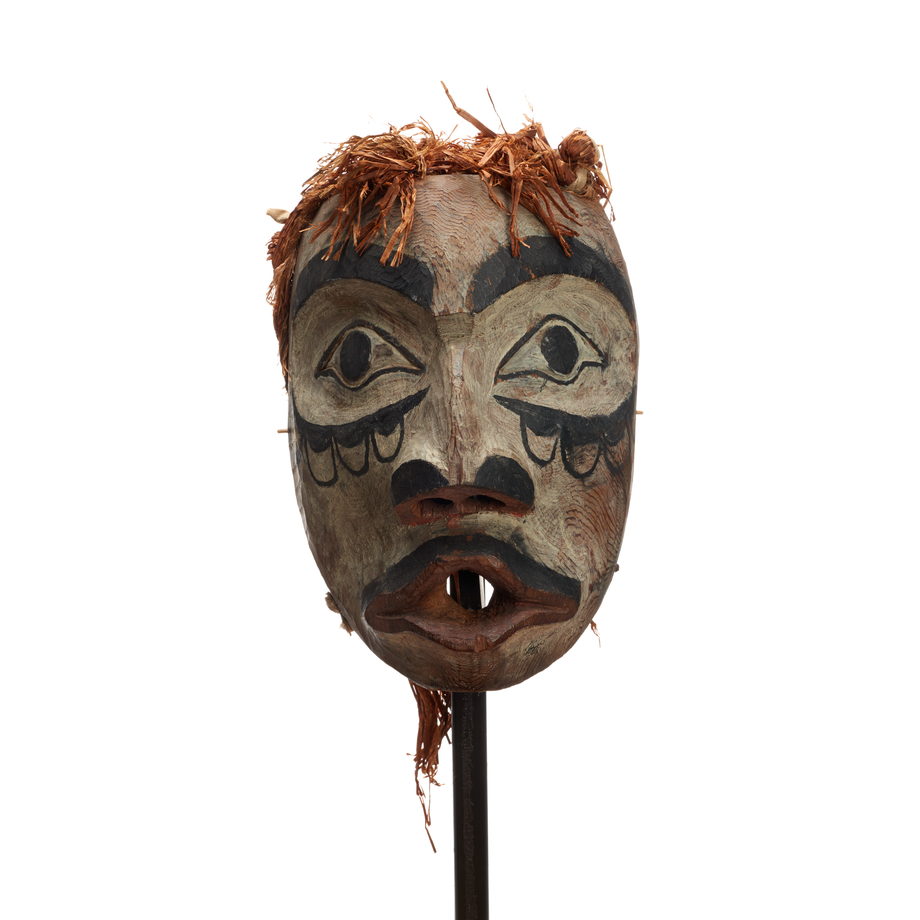Atłak´ima
Forest Spirit Mask
The dance of the Forest Spirits can include up to 40 masked dancers. This dance tells the story of a boy who runs away from his abusive father to kill himself. In the forest, he meets a supernatural mouse who takes him to another realm where he meets the Forest Spirits. He returns to his village and shares the stories and dances of the Forest Spirits with his people.
Catalogue Information
Provenance
Owned by Harry Mountain until its forced surrender to Indian Agent William Halliday on March 25, 1922. Halliday later displayed and photographed the seized pieces at the Parish Hall in Alert Bay. After doing an inventory, he crated the items in June, and at the end of September he shipped some of them to the Royal Ontario Museum in Toronto, on long-term loan from the National Museum of Man (now the Canadian Museum of History). They remained in the possession of the ROM until the NMM pulled its loan and returned the pieces to the Nuyumbalees and U'mista cultural societies in 1988.
Materials
Wood, Red Cedar; Fibre, Bark, Red Cedar; Wood, Alder; Metal, Iron Nails; String, Cotton
Dimensions
32.5 cm x 24.5 cm x 15.0 cm
Accession Number
88.06.007
Physical Description
Wawaxanuwilana (Ground Preparer) mask. This mask is fairly worn and the natural wood is starting to show through where the paint has rubbed off. The mask was completely whitewashed which is characteristic of forest spirit masks. The eyebrows, eyes and eyelids, U-shaped designs decorating the cheeks, nostrils and moustache are painted black. The markings on the cheeks are a characteristic of most Ground Preparers. The undersides of the nostrils are painted red along with the lips. The nostrils are carved through to make sight holes for the wearer. The mask has natural and dyed red cedar bark lashed into a fringe as well as bundles nailed to the top of the rim. The presence of cedar bark places this Atłak´ima mask in the T´seka ceremonies.
White, black, red.
